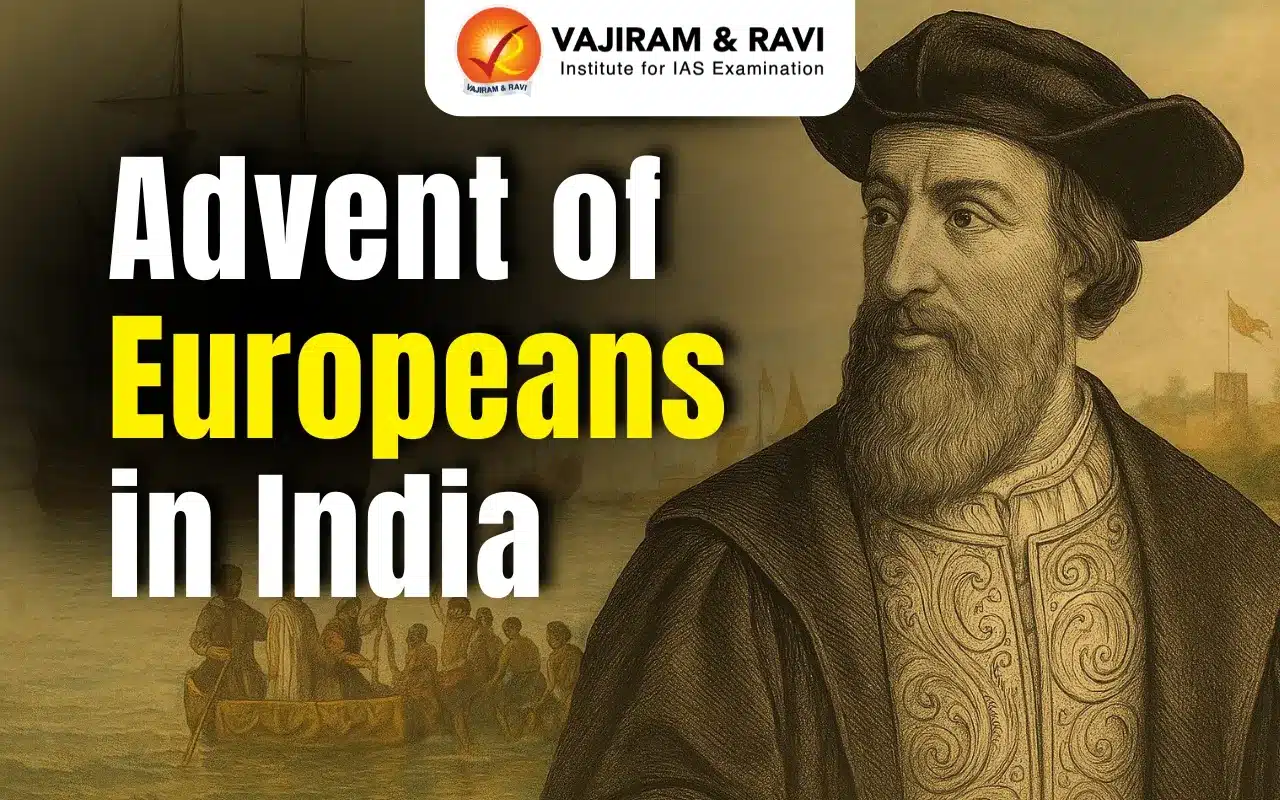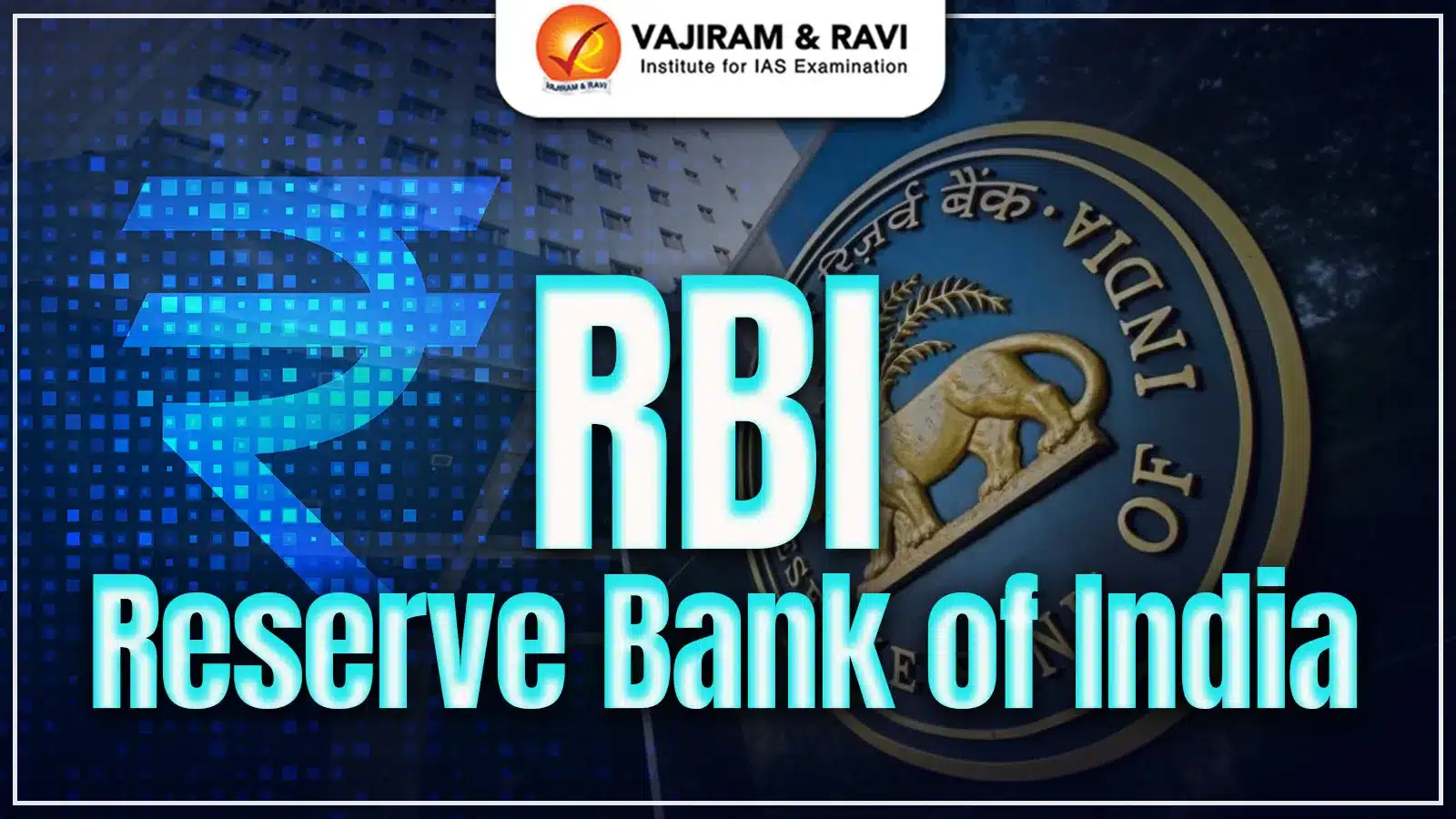In the late fifteenth century, Portuguese explorer Vasco da Gama reached the shores of the Indian subcontinent, establishing maritime connections that marked the onset of European influence. Subsequent expeditions by other European powers, including the Dutch, English, and French, intensified this engagement, leading to competition for trade dominance and territorial control.
The establishment of trading posts and colonies paved the way for a new chapter in India's history, shaped by global interactions and the eventual ascendance of British colonial rule. The arrival of Europeans would indelibly shape India's destiny and leave a lasting imprint on its social, economic, and political landscapes.
The Advent of Europeans in India
The advent of Europeans in India marked a significant turning point in the history of India.
- The arrival of Vasco da Gama: It began with the arrival of Portuguese explorer Vasco da Gama in 1498, establishing a direct sea route between Europe and India. This pivotal moment opened doors to European colonialism and trade domination in the sub-continent.
- Other Europeans: The Portuguese, followed by other European powers, sought to control the lucrative spice trade, leading to the establishment of trading posts and fortifications along the Indian coastline.
- Impact: Their arrival brought about cultural exchanges, conflicts with local rulers, and the reshaping of Indian society. This period laid the foundation for centuries of European influence and colonial rule in India.
The Advent of The Portuguese
The Portuguese arrival in India marked the beginning of European colonialism in the subcontinent.
Factors behind the Portuguese Voyage to India
After the decline of the Roman Empire and the fall of Constantinople in 1453, the Arabs established dominance in Egypt and Persia, controlling the trade routes to India. The Europeans lost direct contact with India and the easy accessibility to Indian commodities.
- Spirit of the voyage: In the 15th century, there was a growing eagerness in Europe for adventurous sea voyages to reach the East, driven by the spirit of the Renaissance and advancements in shipbuilding and navigation.
- Division of non-Christian world: The Treaty of Tordesillas(1494) divided the non-Christian world between Portugal and Spain, granting Portugal the eastern territories and Spain the western territories. This set the stage for Portuguese incursions into the waters around India.
The Portuguese Governors
- Vasco da Gama:
- The arrival of Vasco da Gama in Calicut (now Kozhikode) in 1498 had a significant impact on Indian history. The Hindu ruler of Calicut, the Zamorin, welcomed him as the prosperity of his kingdom relied on trade.
- However, the Arab traders, who had a strong presence on the Malabar coast, were concerned about the Portuguese gaining influence in the region.
- The Portuguese aimed to monopolise the profitable eastern trade and exclude their competitors, especially the Arabs.
- Vasco da Gama returned to India in 1501 but faced resistance from the Zamorin when he sought to exclude Arab merchants in favour of the Portuguese.
- Francisco de Almeida (1505-1509):
- In 1505, Francisco de Almeida was appointed as the Governor of India, with the mission to consolidate Portuguese influence and destroy Muslim trade.
- Almeida faced opposition from the Zamorin and a threat from the Mamluk Sultan of Egypt.
- In 1507, the Portuguese squadron was initially defeated in a naval battle off Diu but avenged the defeat the following year.
- Almeida aimed to make the Portuguese the masters of the Indian Ocean through his Blue Water Policy.
- Blue Water Policy (Cartaze system): It was a naval trade licence or pass issued by the Portuguese empire in the Indian Ocean during the sixteenth century. Its name derives from the Portuguese term 'cartas', meaning letters.
- In 1505, Francisco de Almeida was appointed as the Governor of India, with the mission to consolidate Portuguese influence and destroy Muslim trade.
- Alfonso de Albuquerque (1509-1515)
- Alfonso de Albuquerque succeeded Almeida and established Portuguese bases strategically overlooking the entrances to the Indian Ocean.
- Albuquerque introduced a permit system for other ships and exercised control over major shipbuilding centres.
- Goa was acquired from the Sultan of Bijapur in 1510, becoming the first Indian territory under European control since Alexander the Great's time.
- Albuquerque's rule also saw Portuguese men settling in India, establishing themselves as landlords, artisans, craftsmen, and traders.
- An interesting feature of his rule was the abolition of sati.
- Nino da Cunha (1529-1538)
- He moved the headquarters from Cochin to Goa.
- The Portuguese secured the island of Bassein and its dependencies from Bahadur Shah of Gujarat in 1534, but their relations soured after Humayun withdrew from Gujarat, leading to a confrontation in which Bahadur Shah was killed by the Portuguese in 1537.
- Additionally, da Cunha attempted to increase Portuguese influence in Bengal by settling many Portuguese nationals there with Hooghly as their headquarters.
Decline of the Portuguese
By the 18th century, the Portuguese in India experienced a decline in their commercial influence.
- The Portuguese lost their local advantages as powerful dynasties emerged in Egypt, Persia, and North India, and the Marathas became their immediate neighbours.
- The Marathas captured Salsette and Bassein from the Portuguese in 1739.
- The religious policies of the Portuguese, including the activities of the Jesuits, caused political concerns.
- Their conversion efforts to Christianity, coupled with antagonism towards Muslims, led to resentment among Hindus.
Significance of the Portuguese
- The emergence of naval power: The arrival of the Portuguese in India marked the emergence of naval power and initiated what is often referred to as the European era.
- Own systems: The Portuguese disregarded existing rules and sought to establish their dominance over Indian trade and the Indian Ocean trading system.
- Military innovations: In the sixteenth century Malabar, the Portuguese demonstrated military innovation with their use of body armour, matchlock men, and guns landing from their ships.
- Maritime techniques: The Portuguese excelled in maritime techniques, with their heavily constructed multi-decked ships designed to withstand Atlantic gales, allowing for heavier armament.
- Organisational skills: Their organisational skills, the establishment of royal arsenals and dockyards, and the maintenance of a regular system of pilots and mapping were notable contributions.
- Religious Policy: The Portuguese arrived in the East with a zeal to promote Christianity and persecute Muslims. They were initially tolerant towards Hindus but became increasingly intolerant over time, especially after the introduction of the Inquisition in Goa.
- Agricultural introductions: The Portuguese played a key role in transforming Indian agriculture and cuisine by introducing several crops from the Americas, including chillies, potatoes, tomatoes, cashew nuts, pineapple, papaya, etc. These crops became deeply integrated into Indian food habits and farming practices.
The Advent of The Dutch
The Dutch Commercial enterprise led them to undertake voyages to the East.
- Trading company: In 1602, the States-General of the Netherlands merged various trading companies to form the East India Company of the Netherlands.
- This company was granted the authority to conduct wars, negotiate treaties, acquire territories, and establish fortresses.
- Trading centre: The Dutch established their control over Masulipatnam in 1605 and they established their settlement at Pulicat in 1610.
The Advent of The English
In 1599, a group of English merchants known as the 'Merchant Adventurers' formed a company to pursue Eastern trade and share in the high profits enjoyed by the Portuguese.
- Queen’s charter: Queen Elizabeth I issued a charter on December 31, 1600, granting exclusive trading rights to the newly formed 'Governor and Company of Merchants of London trading into the East Indies.'
- Initially granted a monopoly of fifteen years, it was later extended indefinitely.
Foothold in West and South
- Arrival at Jahangir’s court: In 1609, Captain Hawkins arrived at the court of Jahangir in an attempt to establish a factory at Surat, but it was unsuccessful due to Portuguese opposition.
- Beginning of trade: However, the English began trading at Masulipatnam in 1611 and established a factory there in 1616.
- Battle with Portuguese: In 1612, Captain Thomas Best defeated the Portuguese in a sea battle of Surat, leading to Jahangir granting permission for an English factory in Surat in 1613.
- Peace was established with the Portuguese, and an Anglo-Dutch compromise allowed the English to trade without interference.
- Gift of Bombay: Bombay was gifted to King Charles II in 1662 and later given to the East India Company in 1668, becoming their headquarters in 1687.
- Madras: The English also obtained trading privileges from the Sultan of Golconda and built a fortified factory at Madras in 1639, which became the headquarters of English settlements in South India.
Foothold in Bengal
Bengal, a prosperous and significant province of the Mughal Empire, attracted English merchants due to its trade and commercial opportunities.
- Permission to trade: In 1651, Shah Shuja, the subahdar of Bengal, granted the English permission to trade in Bengal in exchange for an annual payment.
- Request for a fortified settlement: Seeking a fortified settlement, William Hedges, the first agent and governor of the Company in Bengal, appealed to Shaista Khan, the Mughal governor, but hostilities ensued.
- Settlement at Sutanuti: In 1686, Hooghly was sacked by the Mughals, leading to English retaliation. After negotiations, Job Charnock signed a treaty with the Mughals in 1690, allowing the English to establish a factory at Sutanuti.
- Fort William: The English obtained permission to buy the zamindari of Sutanuti, Gobindapur, and Kalikata in 1698, and the fortified settlement was named Fort William in 1700, becoming the seat of the eastern presidency (Calcutta).
The Advent of The French
The French, although harbouring a desire for East Asian commerce since the early 16th century, arrived on the Indian coasts relatively late.
- Trading company: In 1664, during the reign of Louis XIV, Minister Colbert established the Compagnie des Indes Orientales (French East India Company), which received a 50-year monopoly on French trade in the Indian and Pacific Oceans.
- The company was reorganised as the 'Perpetual Company of the Indies in 1720 and strengthened under the governance of Lenoir and Dumas.
- Rivalry with the Dutch: The French company faced setbacks during wars with the Dutch and the outbreak of the War of Spanish Succession, leading to the abandonment of factories in Surat, Masulipatnam, and Bantam.
- Pondicherry: It was founded in 1674 and became the nerve centre of French power in India.
The Advent of The Danes
The Danish East India Company, also known as the Danish Asiatic Company, was established in 1616 and 1620; they founded a factory at Tranquebar near Tanjore, on the eastern coast of India.
- Their principal settlement was at Serampore near Calcutta.
- The Danish factories, which were not important at any time, were sold to the British government in 1845.
- The Danes are better known for their missionary activities than for commerce.
Reasons for English success against other Europeans
The success of England over other European powers in India can be attributed to several key factors:
- Structure and nature of trading companies: The English East India Company, unlike its counterparts, was controlled by a board of directors elected annually, with shareholders exercising considerable influence.
- Naval superiority: The Royal Navy of Britain was the largest and most advanced in Europe, having achieved notable victories such as the defeat of the Spanish Armada and the French at Trafalgar.
- Industrial Revolution: England was at the forefront of the Industrial Revolution, benefiting from inventions and advancements in textiles, metallurgy, steam power, and agriculture.
- Military skill and discipline: British soldiers were highly disciplined and well-trained. British commanders demonstrated strategic prowess and implemented innovative tactics, which, combined with technological advancements, allowed smaller groups of British fighters to defeat larger armies.
- Stable Government: Compared to other European nations experiencing periods of political upheaval, Britain enjoyed relatively stable governance with efficient monarchs. France, in particular, faced the turbulent period of the French Revolution and the Napoleonic Wars, weakening its position and forcing it to align with Britain.
- Lesser zeal for religion: Unlike Spain, Portugal, and the Dutch, Britain displayed less zealousness in spreading Christianity. This more tolerant approach made British rule more acceptable to the local population in India.
- Use of debt market: Britain successfully utilised the debt markets to fund its wars, particularly through the establishment of the Bank of England.
Advent of Europeans in India UPSC PYQs
Question 1: Consider the following fruits: (UPSC Prelims 2025)
- Papaya
- Pineapple
- Guava
How many of the above were introduced in India by the Portuguese in the sixteenth and seventeenth centuries?
a) Only one
b) Only two
c) All the three
d) None
Last updated on November, 2025
→ Check out the latest UPSC Syllabus 2026 here.
→ Join Vajiram & Ravi’s Interview Guidance Programme for expert help to crack your final UPSC stage.
→ UPSC Mains Result 2025 is now out.
→ UPSC Notification 2026 is scheduled to be released on January 14, 2026.
→ UPSC Calendar 2026 is released on 15th May, 2025.
→ The UPSC Vacancy 2025 were released 1129, out of which 979 were for UPSC CSE and remaining 150 are for UPSC IFoS.
→ UPSC Prelims 2026 will be conducted on 24th May, 2026 & UPSC Mains 2026 will be conducted on 21st August 2026.
→ The UPSC Selection Process is of 3 stages-Prelims, Mains and Interview.
→ UPSC Result 2024 is released with latest UPSC Marksheet 2024. Check Now!
→ UPSC Prelims Result 2025 is out now for the CSE held on 25 May 2025.
→ UPSC Toppers List 2024 is released now. Shakti Dubey is UPSC AIR 1 2024 Topper.
→ UPSC Prelims Question Paper 2025 and Unofficial Prelims Answer Key 2025 are available now.
→ UPSC Mains Question Paper 2025 is out for Essay, GS 1, 2, 3 & GS 4.
→ UPSC Mains Indian Language Question Paper 2025 is now out.
→ UPSC Mains Optional Question Paper 2025 is now out.
→ Also check Best IAS Coaching in Delhi
Advent of Europeans in India FAQs
Q1. Who invented the trade route to India?+
Q2. How many European powers have come to India to establish their trading centres in India?+
Q3. Which was the first European power to enter India?+
Q4. When did the trade route to India was discovered?+

















